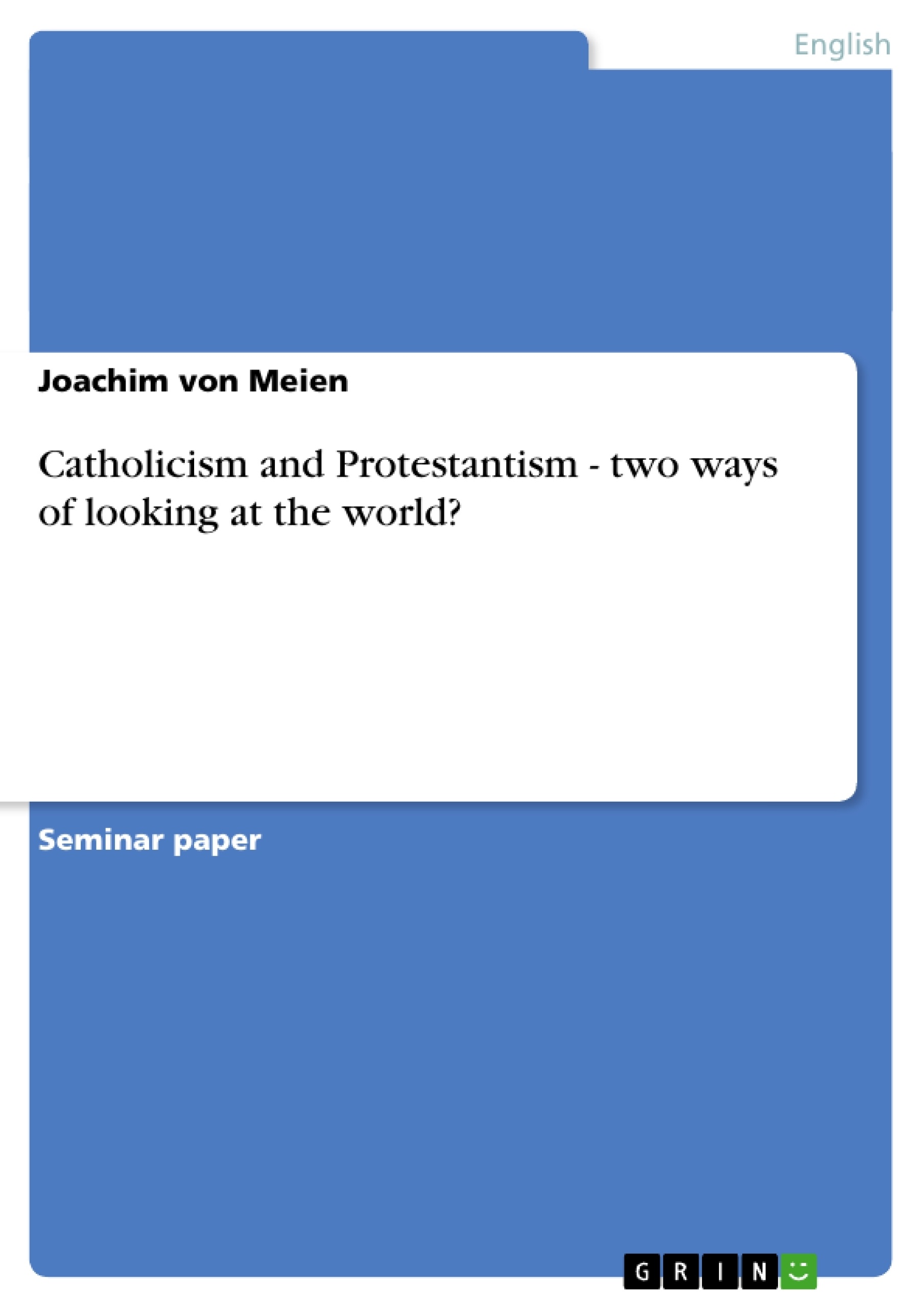Catholicism and Puritanism are important elements of the Christian religion. For about 19 % of today’s world population (about 995 million people) Catholicism still plays a major role in their lifes and also Puritan effects can still be observed by looking for instance at the society of the United States of America. But what are the main elements of these religious movements? Chapter 1 is supposed to give a general introduction into the topic. In order to do so Catholicism and Puritanism are separately examined. Chapter 2.1 and 2.2 therefore take a closer look at historical developments, main content elements, standpoints and attitudes of these two religious groups. Since this is a literary studies paper it is going to examine a literary work. In 1796 Matthew Lewis published his first book called “The Monk”. The 19 year old author created it in only ten weeks. The book became extremely popular which made Lewis very well known, often under the name “Monk” Lewis.
Chapter 2.3 “The historical and intellectual background in England at the publication of ‘The Monk’ describes the situation in late 18th century England before starting to analyse the text in chapter 3. This seems adequate since it is supposed to provide the reader with background knowledge and help him to understand the intense public reaction towards the publication of the book and also helps to understand contemporary views and issues that preoccupied many people of the time. Thereby general historical facts are neglected. Chapter 2.3 rather takes a closer look at the English society and its attitudes towards moral, religion and reason at the end of the 18th century and tries to find out topic relevant particularities. As can also be concluded by the title “The Monk”, it is religion which plays an important role in Matthew Lewis’ book. But what is his attitude towards religion, especially towards Catholicism, and how does he present it literary, i.e. which metaphors and comparisons does he make use of? Are there hidden or unconcealed assaults on Christianity and if so, what is being criticised? Chapter 3.1 preoccupies with these questions.
Inhaltsverzeichnis (Table of Contents)
- Introduction
- Catholicism, Puritanism and the Historical Background of late 18th century England
- Catholicism
- Puritanism
- The historical and intellectual background in England at the publication of "The Monk"
- "The Monk" and Religion
- Catholicism: Superstition and Hypocrisy?
- The role of the bible in “The Monk" and the reaction of critics
- Conclusion
Zielsetzung und Themenschwerpunkte (Objectives and Key Themes)
This paper aims to explore the interplay between Catholicism and Puritanism in Matthew Lewis' gothic novel "The Monk". It analyzes the historical and intellectual context surrounding the publication of the novel in late 18th century England, focusing on the prevailing religious and moral attitudes of the time.
- The historical development and key tenets of Catholicism and Puritanism.
- The depiction of Catholicism in "The Monk" and its reception by contemporary critics.
- The role of the Bible in Lewis' novel and the critical response to its interpretation.
- The relationship between religion, morality, and reason in 18th century English society.
- The impact of "The Monk" on contemporary literary and societal landscapes.
Zusammenfassung der Kapitel (Chapter Summaries)
- Introduction: This chapter provides an overview of the topic, introducing the main elements of Catholicism and Puritanism and outlining the focus of the paper on Matthew Lewis' "The Monk".
- Catholicism, Puritanism and the Historical Background of late 18th century England: This chapter explores the historical development and key tenets of Catholicism and Puritanism, highlighting their contrasting perspectives and the influence they had on the religious and intellectual landscape of England.
- Catholicism: This section examines the origins and development of Catholicism, tracing its evolution from the 1st century AD to the 18th century. It focuses on the Catholic Church's hierarchical structure, its dogmatic views, and its role in shaping societal norms.
- Puritanism: This section delves into the emergence of Puritanism as a reform movement within the Church of England, exploring its origins, key beliefs, and impact on English society. It highlights the Puritan emphasis on individual conscience, biblical interpretation, and the role of the sermon in religious life.
- The historical and intellectual background in England at the publication of "The Monk": This section examines the social, political, and intellectual context in which "The Monk" was published, analyzing the prevailing attitudes towards religion, morality, and reason in 18th century England. It explores the significance of the book's release in a society grappling with religious tensions, intellectual debates, and evolving social norms.
- "The Monk" and Religion: This chapter analyzes the role of religion, particularly Catholicism, in "The Monk", exploring Lewis' portrayal of religious figures and his critique of Catholic practices. It focuses on the depiction of superstition, hypocrisy, and the use of religious imagery within the narrative.
- Catholicism: Superstition and Hypocrisy?: This section examines Lewis' depiction of Catholicism in "The Monk", focusing on the portrayal of religious figures and their motivations. It analyzes the novel's critique of Catholic practices and beliefs, exploring themes of superstition, hypocrisy, and the tension between religious authority and individual morality.
- The role of the bible in “The Monk" and the reaction of critics: This section delves into Lewis' controversial interpretation of the Bible within "The Monk", analyzing the specific passage that sparked a strong critical response. It explores the significance of this passage in the context of contemporary religious and moral debates, examining the nature of the critics' reaction and its impact on Lewis' work.
Schlüsselwörter (Keywords)
This paper examines the interplay of Catholicism, Puritanism, and the gothic novel in late 18th century England. Key themes include religious reform, historical context, critical reception, literary interpretation, religious imagery, and societal morality.
- Arbeit zitieren
- Joachim von Meien (Autor:in), 2005, Catholicism and Protestantism - two ways of looking at the world?, München, GRIN Verlag, https://www.grin.com/document/41195



